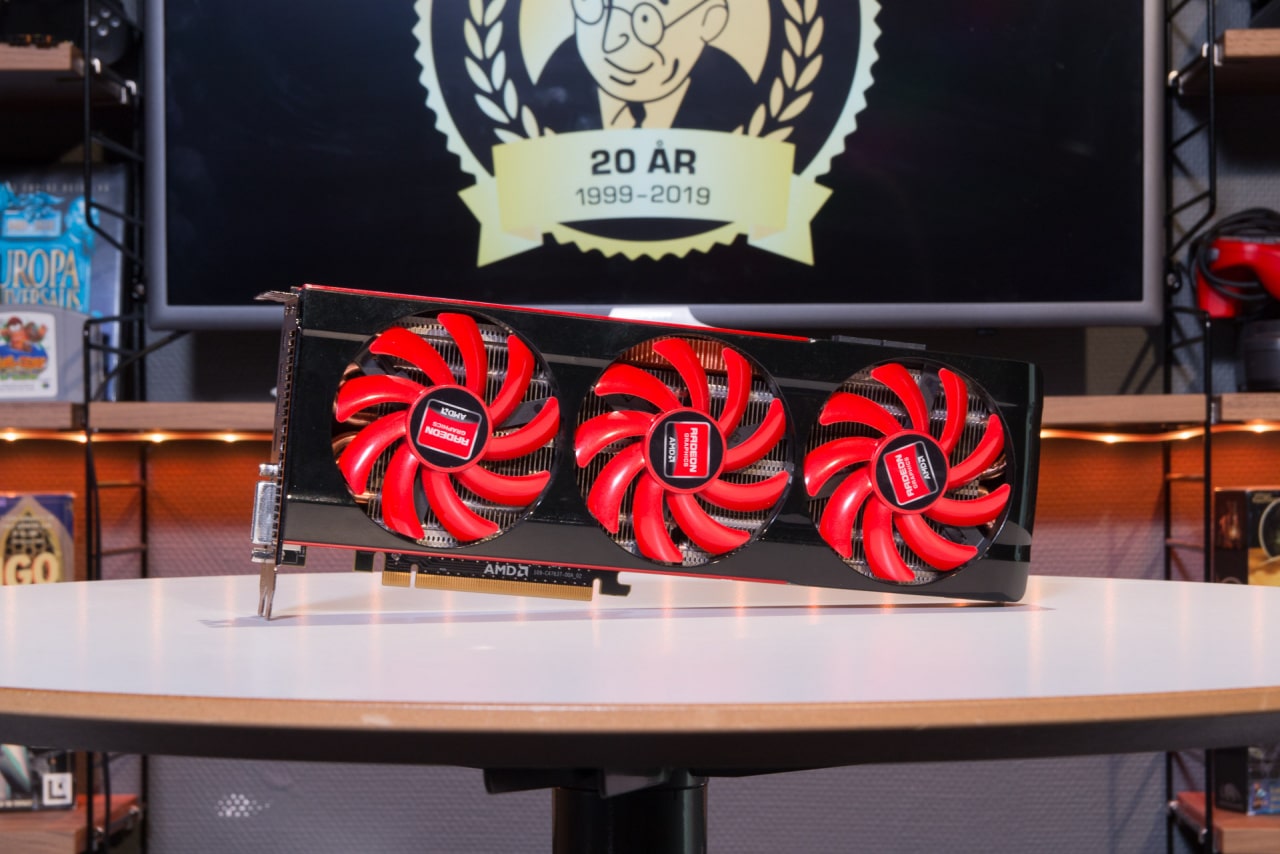After the successful launch of the Radeon HD 7970 at the end of 2011, many were eagerly awaiting AMD’s next contribution to the dual-circuit graphics card category under the hood. In the company’s planning for the coming year, there was a model with two Tahiti XT circuits, which on paper would give the company the performance lead in the graphics card market.
The months passed and it became increasingly quiet from AMD’s side around the new card that was supposed to be called Radeon HD 7990 with the code name “New Zealand”. Meanwhile, Nvidia managed to launch the dual-boot Geforce GTX 690 and currently cement its position as the highest-performing player in terms of graphics cards.
At the end of the summer of 2012, it became clear that AMD was having great difficulty producing the Radeon HD 7990, which ultimately led to the company putting the card on ice. Instead, it was opened up for partner manufacturers to create their own variants with dual graphics circuits, which resulted in, among other things, the mammoth models Powercolor Devil 13 and Asus Ares II.
However, AMD was not quite ready to drop the idea of launching its own card with dual Tahiti XT circuits, but continued the development behind closed doors. Like a bolt from the blue, the Radeon HD 7990, codenamed “Malta”, crashed in the spring of 2013 – a year after Nvidia launched its Geforce GTX 690.
As previously indicated, the Radeon HD 7990 officially offered a dual set of the Tahiti XT graphics circuit previously used in the Radeon HD 7970. These were accompanied by a full 6 GB of GDDR5 memory, which in practice gave each circuit 1 GB more graphics memory than the competitor Nvidia’s Geforce GTX 690.
Where the company previously had a habit of exceeding the PCI Express standard with its dual jacks, this time they chose to stay within a power budget of 375 W for the Radeon HD 7990. To achieve this, they needed to work aggressively with dynamic clock frequencies for the graphics circuits, which resulted at generally lower levels than when the circuit was used with the Radeon HD 7970.
However, the lower power budget did not make an unexpected impression on the card’s power outlet, which was at a relatively low level for a graphics card with dual graphics circuits. This also allowed the card’s well-designed cooling solution to keep the fans at a kinder speed under load, as the heat development did not push the ceiling.
► Read SweClocker’s review of the AMD Radeon HD 7990
When the card passed SweClocker’s test lab in the spring of 2013, it was clear that it was a powerful model in terms of performance, but that it had a hard time keeping up with dual Radeon HD 7970 when these were paired with Crossfire. In addition, the editors encountered a lot of problems with the drivers, which gave shaky performance with, among other things. microstuttering in several titles.
The card was praised for its well-built, and relatively quiet, cooling solution, but received a lot of criticism for overpowering the fan sound with an awful lot of coil whine. With a price tag of almost 10,000 kronor, the card felt in the most expensive team in terms of the shaky experience at the time of the test and therefore the model went without distinction.
This is how the Radeon HD 7990 performs in 2019
After digging a bit into the hiding places, we managed to fish up a Radeon HD 7990 for a series of fast performance tests. We use SweClocker’s usual test rigs for graphics card tests and the game titles Battlefield 1, Far Cry 5 and Rise of the Tomb Raider at a resolution of 1,920 × 1,080 pixels. The driver used was Radeon Software Adrenalin 2019 Edition 19.4.3.
Battlefield 1 has relatively good support for several graphics circuits, giving the Radeon HD 7990 the chance to step up in the table. The model is just below AMD’s Radeon RX 590 in terms of performance and offers about 64 percent better performance than a single Radeon HD 7970. It is worth noting that we encountered some sections of shaky rendering times with the model, which slowed down the experience somewhat.
Far Cry 5 also offers support for Crossfire, which gives the Radeon HD 7990 the opportunity to take a position just behind the Radeon RX 590. Just like in Battlefield 1, however, the experience was not directly silky smooth, with some microstuttering on the road, which also makes a clear impression in the measured minimum values.
The last stop at Rise of the Tomb Raider and Radeon HD 7990 once again presents relatively good measurement figures for a six-year-old graphics card. The model is placed here at about the same level as a Geforce GTX 1060 and 86 percent better than a Radeon HD 7970. Unfortunately, this game title also suffers from uneven rendering times with the card, which gives a shaky flow.
Summary thoughts on the Radeon HD 7990 six years later
The general impression from the Radeon HD 7990 is not entirely different from the one we experienced at the time of testing in the spring of 2013. It was undeniably a powerful graphics card for its time, and even with today’s standards there are good opportunities to achieve frame rates above 60 FPS when playing in 1080p – provided that there is support for Crossfire.
Unfortunately, we consistently encountered problems with shaky rendering times, so-called microstuttering, in most of the titles tested, which meant that the gaming experience felt subjectively worse than, for example, with a single Radeon RX 590. In addition, this graphics card generates some of the worst flushing we have ever encountered, something that feels boring to the well-polished cooling solution.
Were you one of those people who bought a Radeon HD 7990? Feel free to share your memories and experiences in the comment thread of this article!















